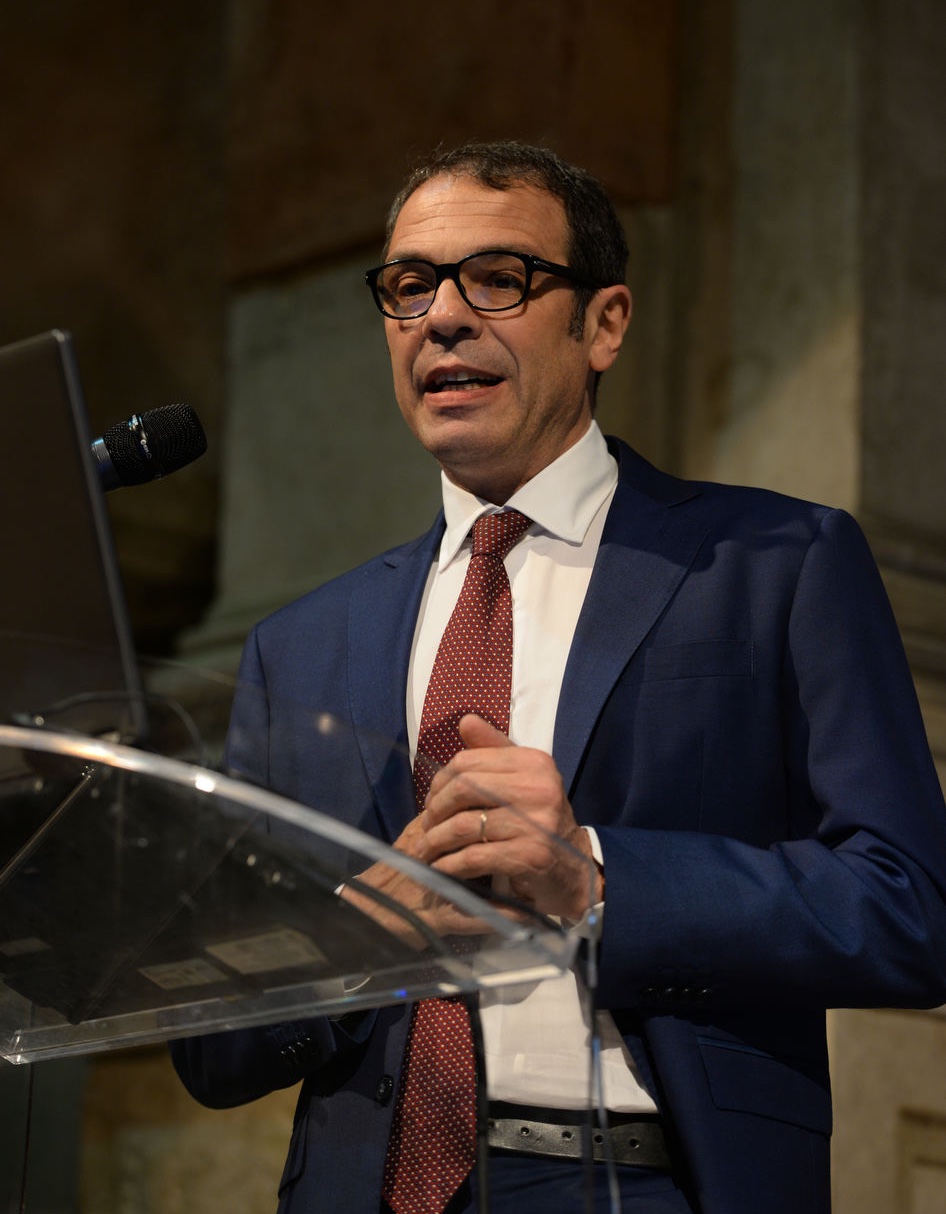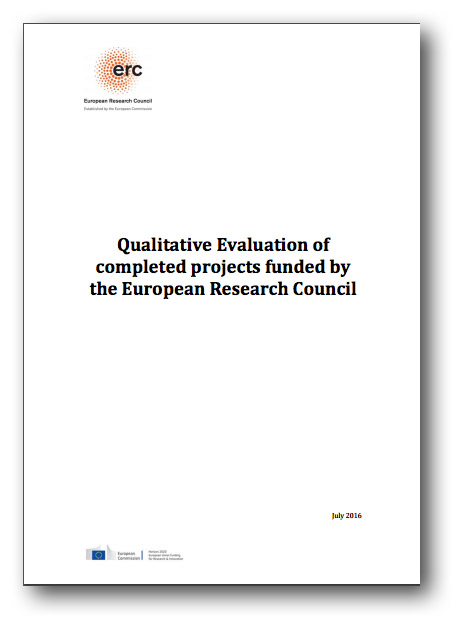Europe’s Flawed Race for Scientific Research Funding
At a time when research in Europe is under the constant threat of budget cuts, an organization like the European Research Council sounds like a godsend. Created by the European Commission in 2007 and endowed with a €13.1 billion ($15 billion) budget from the Horizon 2020 initiative, the council’s stated mission is to encourage “the risky venture” of frontier research by supporting “investigator-driven” approaches through competitive funding.

But some critics suggest the word “competitive” is misleading. They say that some E.U. nations (typically the richer ones) and some most-favored institutions (typically the largest ones), benefit far more frequently from council funding than others. What’s more, that inequity — along with proclivities on the part of the ERC to fund the familiar, and to straightjacket grant recipients with inflexible reporting rules — means that the 12 percent of all proposals that do receive council support are not necessarily the most innovative projects.
Rather, advocates for funding reform say, the ERC process encourages little more than a race to the middle.
Francesco Sylos-Labini, a researcher at Italy’s National Research Council and the Enrico Fermi Center, has been pointing to these apparent paradoxes in the ERC’s selection criteria for years. “The extremely tight success rate for proposals means that, in order to win, I need to get close to unanimous approval from the evaluation panel,” he says. “I can’t afford raising a few eyebrows, or not having everyone fully convinced. Of course, the best way to do this is proposing projects in line with conventional paradigms, that are highly likely to cater to everyone’s liking.”
“Needless to say,” he adds, “that’s the exact opposite of ‘frontier research.’”

Francesco Sylos-Labini, a researcher at Italy’s National Research Council and the Enrico Fermi Center, has been pointing to problems with the European Research Council’s funding model for years.
Visual: Marco Sabadin/Vision/Flickr
Even after a project is deemed eligible, Sylos-Labini says, researchers can’t lower their guard. Before they can be paid, they need to produce a report, which, according to the Horizon 2020 grant agreement, must include a section justifying the differences between work expected and work actually performed. “The grants are completely binding,” he says. “There is no room for adjustments, or complete rethinking. They speak of ‘risky venture,’ but refuse to see that when pursuing a true breakthrough, you need to accept possible disappointment. And when you can’t afford disappointment, you’re forced to stay within known boundaries.”
That’s problematic, says Donald Gillies, a former professor of philosophy of science and mathematics at University College London. Far from providing funding for promising breakthroughs, Gillies suggests, the European Research Council’s approach to grantmaking might actually impede them.
“If it’s impossible to determine which is the right path prior to undertaking it, then the best we can do is financing a plurality of promising leads,” he says. “With current criteria, if a game-changing project looks too much in the long term, it gets skipped in favor of mediocre short-term proposals. Science is not incremental. It may stay silent for years and then suddenly hit the jackpot.”
An analysis of information gleaned from the E.U.’s Open Data Portal for projects funded between 2007 and 2015 — under Horizon 2020 and the previous Seventh Framework Program for Research and Technological Development, also known as FP7— suggests that the ERC is looking for that potential scientific jackpot in some places more than others. The U.K., France, Germany and the Netherlands, for example, saw about 15 percent of their submitted proposals ultimately receive ERC funding, on average. Switzerland had the highest success rate, at 24 percent.
But Italy, Spain, and Greece were among those receiving funding only 2 to 7 percent of the time — even though in many cases these countries had submitted roughly the same number of proposals as their more successful counterparts.
Similarly, a third of all projects granted funding were coordinated by just 1 percent of all participating institutions — and almost all of these were from countries enjoying high success rates for their proposals. Topping the list: France’s Centre National de la Recherche Scientifique; Cambridge and Oxford Universities; and Germany’s Max Planck Society.
An ERC funding report warns, of course, that it is often difficult to differentiate between single institutions and national “umbrella” organizations that coordinate research across multiple universities, but critics say the favoritism is evident. In 2014, for example, U.K.-based scientists took home nearly a quarter of all available ERC grants, though it remains unclear how that country’s recent vote to exit the European Union might affect its access to council funding going forward.
“The ERC is an administrative and technical entity tasked with political decisions,” Sylos-Labini says. “Of course it can’t work. It’s an extreme meritocracy without any kind of affirmative action.” He pointed to Rome’s Sapienza University — the biggest university in Europe by enrollment, and where I, like many other Italians, earned my degree. It ends up competing with universities with the same yearly budget, Sylos-Labini says, but with just a tenth of the students.

The European Research Council evaluated its own record of funding “breakthroughs,” but the sample size was small.
Are all of these complaints fair? Representatives for the the ERC suggested not when I emailed them. They dismissed the notion, for example, that the nationality of institutions of individual applicants could have any bearing on the evaluation of proposals, pointing by way of evidence to a rough correlation between a country’s own expenditure on research, and the amount of council funding it has received. They also quoted a recent speech by the council’s president, Jean-Pierre Bourguignon, in which he reaffirmed the need for strict follow-up and monitoring of research expenses — albeit in a way that he described as “light and tailor-made” to needed adjustments when facing uncertainties. ERC staff also cited a survey suggesting that 93 percent of grant beneficiaries “highly praised” the implementation of their grants.
As for whether or not ERC-funding truly drives innovative work, a spokesman for the council, Marcin Monko pointed to an evaluation published by the ERC in July, which found that 71 percent of completed, ERC-funded projects — which span everything from the life and physical sciences to engineering, the social sciences, and the humanities — led to a “major scientific advance or a scientific breakthrough.” About 7 percent of papers stemming from those projects, that analysis also found, are among the top 1 percent “most highly cited publications in their scientific discipline and year of publication.”
Of course, that analysis was based on a limited sampling of just 199 completed, ERC-funded projects — culled from the roughly 6,000 project proposals have been selected for funding in the nine years since the ERC’s inception. “It is important to keep in mind that the small sample size limits the conclusions that can be drawn,” the council’s own report notes. “These results cannot necessarily be extrapolated to the full set of ERC‐funded projects.”
And that’s the sort of thing that leaves critics like Sylos-Labini scratching their heads. Too many E.U. countries are facing domestic budget cuts, he says, leaving scientists in even more dire need of support from outside sources. (He pointed, for example, to a 2014 open letter — which now has nearly 20,000 signatures — in which he and other researchers decried the evaporation of basic research funding in countries across the E.U.)
“Countries with major budget cuts like us and Spain are more likely to seek European funding,” Sylos-Labini says. “But rather than mitigating the disparities, the ERC feeds them. Ever since its inception, it’s been used to steadily move resources from south to north of the continent, favoring a few well-established centers.”
A similar argument was mounted by an “Anonymous Academic” writing in the Guardian two years ago. “Researchers from Eastern Europe have next to no chance of getting an ERC grant,” the author wrote. “In fact, the ERC increasingly looks like a reversed Robin Hood scheme, given that most ERC funds go to well-off countries.”
The presumed rationale that Sylos-Labini and other critics ascribe to the imbalance is that the ERC is simply trying to pick winners — and that, they say, is a mistake. “Instead of funding as many promising leads as possible, [the ERC] has the presumption of predicting which projects will lead to significant advancements,” Gillies says. “But historically, such predictions have hardly been correct.
“If you can see a beaten path from the very start,” he adds, “it’s no frontier.”
As an alternative, Gillies suggests the ERC should maintain a steady — if smaller — flow of funding to a wider field of recipients from a more diversified set of nations, institutions, and backgrounds. Breakthroughs, after all, are exceedingly difficult to forecast, and even harder to rush.
“One of the fundamental understandings of modern science is that no great breakthrough can be fully predicted from current knowledge — it usually takes 20 or 30 years,” Gillies says. When Einstein formulated special relativity in 1905, for example, he had been working on the decades-old Lorentz’s equations. At the time of their formulation, though, their explanative reach was far more limited.
“A thought experiment I usually make is taking great thinkers from past centuries and [evaluating] their research by ERC criteria,” Gillies adds. “Guess what? None of them would have been granted funding.”
Lorenzo Migliorato earned a degree in philosophy from Sapienza University of Rome. He is currently studying journalism at Cardiff University in Wales.










